How to Better Connect with Consumers Through YouTube Advertising?
PUBLISH DATE: 07 February 2022
People across the globe are increasingly watching online videos. This provides a great opportunity to marketers to connect with consumers by delivering relevant brand messages right when they are watching their favorite videos. This article discusses how marketers can better connect with consumers through YouTube advertising.
How to Better Connect with Consumers Through YouTube Advertising?
In order to connect with different audiences, marketers should scale their campaigns across different types of devices and find out what type of ad format works best with a particular audience.
The statistics show that about eighty percent of YouTube viewers say that watching a movie trailer on YouTube helps them decide whether to watch that movie or not. For promoting the release of a movie, marketers can effectively reach varied audiences across different types of devices by running a YouTube ad campaign with different versions of the video creative.
Another way to better connect with audience involves the use of YouTube Select. By using YouTube Select, a YouTube ad agency can fully customize the selection of channels. It provides marketers a nuanced approach to the way YouTube campaigns are planned and activated. Marketers can reach specific audiences by using bespoke content packages. They can also make use of TV extension packages having broadcaster-quality channels in order to extend the reach of traditional television.
In order to increase exposure to brand, boost sales, and draw good return on investment, marketers should leverage the power of data, creative, and measurement. Marketers can run effective advertising campaigns by making use of the first-party data obtained from the existing customers, website visitors, and channel subscribers. The collection and use of the first-party data should be in compliance with the guidelines laid down by the data privacy regulation.
The creative should be designed in such a way that it reveals brand and its product along with the call to action within the first five seconds of the advertisement. By using a TrueView for action campaign on YouTube, viewers can be encouraged to perform an action such as learn more about the advertised product, request a quote, or buy the product. By using sequential storytelling and adapting creative according to audiences, brands and their partner YouTube marketing companies can effectively connect with the consumers.
How to Use Contextual Ad Targeting to Connect with Consumers?
By using contextual ad targeting, marketers can connect with consumers on a completely new level. AI-powered in-video context identification technology can identify contexts such as faces, logos, objects, places, emotions, actions, on-screen text and audio in online videos in order to serve the most contextually relevant ads. By leveraging this contextual video advertising technology, marketers can serve ads that are fully in line with the video content that viewers are actively engaging with, while ensuring brand safety and brand suitability.
To assess how much success they have achieved in connecting with their consumers through video ad campaigns, marketers should track site visits, conversions and sales. The statistics show that on average, eight percent more search conversion volume and four percent lesser search cost per action are achievable when marketers use YouTube with Search. After getting to know what works, marketers should optimize their campaigns for best results.
The above-mentioned ways will help marketers in running effective YouTube advertising campaigns in order to better connect with consumers, increase conversions, and boost sales.
How Surrounding Content Impacts the Effectiveness of Video Advertising
PUBLISH DATE: 27 January 2022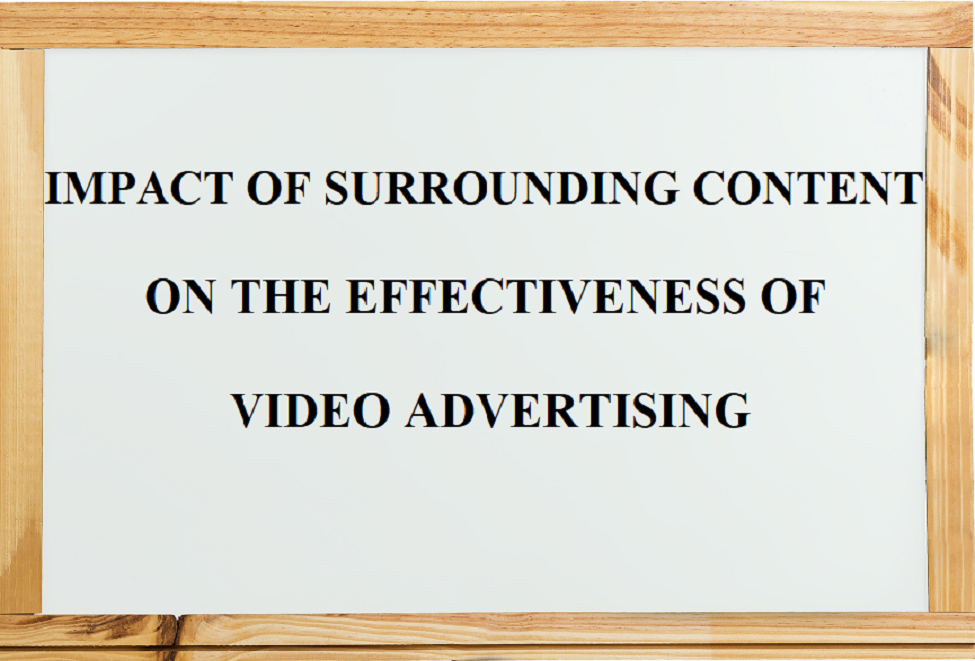
When targeting ads to consumers, marketers give importance to creative and demographics of audience. But these are not the only factors that marketers should take into account. A recent research study shows that consumers’ perception of video ads and effectiveness of video advertising are affected by the context in which the ads are viewed.
The study found that the quality and trustworthiness of the surrounding content are among the key factors influencing the effectiveness of video ads. It examined the impact of the context in which video ads are seen on the performance of ads and the viewers’ perception of ads. The surrounding content should not only be contextually relevant but should also ensure brand safety.
The study involved testing the performance of pre-roll video ads when surrounded by different types of content across different kinds of environments.The three different kinds of content against which the video ads were placed were as follows – content from premium publishers, content generated by users but from established creators, and content generated by users but from everyday people.
The study included more than forty-five hundred participants. A variety of combinations of content and ads were delivered to the mobile phones of the study participants across distinct environments, viz. – non-feed environment on a video aggregator, in-feed environment on a social media platform – Twitter, and non-feed environment on publisher sites.
Effectiveness of Video Advertising
The findings of the study are important for contextual advertising companies. The study revealed that the type of content adjacency significantly influences performance of a brand’s ad. When video ads were surrounded by high-quality and highly trustworthy content, an increase of twelve percent in participants’ purchase intent was observed because of high trustworthiness, while an increase of nine percent in buying intent was observed because of high quality. High-quality and highly trustworthy content scores high on brand safety.
Premium content fetched a greater positive opinion from study participants in comparison to user generated content. Therefore, brands whose video ads were placed against premium content were perceived by the participants as more interesting and favorable.
Video ads placed against user generated content created by established content creators were regarded by participants as more trustworthy and relevant in comparison to the video ads placed against user generated content created by average or non-established content creators.
To participants, non-feed pre-roll video ads appeared as more forced upon them in comparison to in-feed pre-roll video ads. Participants found in-feed pre-roll video ads to be more relevant in comparison to the non-feed video ads. In-feed video ads had more positive impact on participants’ buying intent and brand favorability in comparison to control.
The study clearly shows the importance of the quality of surrounding content in video advertising. By using AI-powered contextual advertising technology, marketers can precisely place ads against high-quality and contextually relevant content, thereby boosting brand favorability, brand trust and purchase intent, and creating deeper connections between consumers and brands.
Research Provides Insights on What Drives Consumers’ Attention to Ads
PUBLISH DATE: 27 December 2021
It is a common observation for marketers that people pay attention to some of the ads they come across but not to others. In order to study this behavior of people, Google recently conducted a consumers’ eye movement research.
The study was conducted among the Australian consumers and involved more than twenty-eight hundred ads. Eye-tracking glasses were given to the study participants, which enabled researchers to evaluate participants’ real-time viewing behavior both inside their homes and outside.
By making use of the wearable technology, researchers were able to clearly assess the attention of study participants. Researchers were able to identify the ads to which participants paid attention across varied environments, platforms, and devices. The study provided insights on the challenges that brands and their partner video advertising companies face when they have to capture and maintain the attention of consumers.
The study found that viewers’ attention to ads and effectiveness of advertising are directly correlated. Although ad reach and exposure are important metrics to evaluate success of an ad campaign, they fail to provide information to marketers on whether their ads were able to capture attention of their audiences. Nowadays, people are exposed to a lot more ads and distractions in comparison to the past. In order to truly assess the effectiveness of ad campaigns, marketers need to know whether attention of their audiences got captured or not.
A previous research revealed that a significant correlation exists between consumers’ attention and ads’ impact. Irrespective of the format of an ad or the type of device used to see an ad, the longer an ad is watched by the people, greater is their level of ad recall. Another study found that people who both watched and heard ads had 2.7 times more recall in comparison to those who only heard ads but not watched them. Thus, an ad casts a lesser impact on a person present in front of a screen on which the ad is appearing, but talking to someone.
Google’s eye-tracking study found that the share of eyes on screen was highest for YouTube at sixty-four percent in comparison to fifty-four percent for catch-up TV and forty-nine percent for free-to-air TV. Thus, YouTube videos drive most attention. By partnering with an online video ad agency, a brand can capitalize on this finding.
Attention is low for TV in comparison to online videos because TV ad breaks are longer and predictable. People plan for these predictable ad breaks in advance, and during the break do tasks such as prepare tea, talk to someone, etc. But in case of YouTube, varied ad formats and shorter duration of ads make YouTube advertising less predictable. Moreover, forty-three percent of YouTube viewers carry their devices along with them while doing other tasks. This enables them to view YouTube videos from anywhere.
Google’s eye-tracking study found that choice, creative and context cast significant impact on attention. Marketers should give preference to contextual advertising over behavioral advertising. Today, people have a choice to watch at any time whatever they want. When people watch content of their choice, they pay a good amount of attention to it. The same applies to online video ads – many of the ads on the 2019 Australian YouTube ads leaderboard were more than two minutes long. The study found that in case of skippable ads, people watched the YouTube ad itself rather than looking at the skip button, and then decided to keep watching the ad or skipping it.
Viewers prefer to watch ads that are interesting. Creative used in a YouTube ad campaign should be able to grab attention of viewers right from the beginning of the ad. Google’ study found that ads having maximum recall used optimized visual language and narrative structure in order to target specific audiences and platforms.
The study found that for many participants, attention was more when they consumed content while commuting in comparison to when they were in their homes. This is because people tend to choose content to watch according to their surroundings. While commuting, people know how much time they can devote to watching content, choose their content accordingly, and watch it with full attention and less distractions.
By utilizing the valuable insights provided by the above-mentioned research, marketers can run ad campaigns that can grab attention of maximum consumers.
Contextual Advertising is More Cost-Efficient than Behavioral Advertising
PUBLISH DATE: 02 December 2021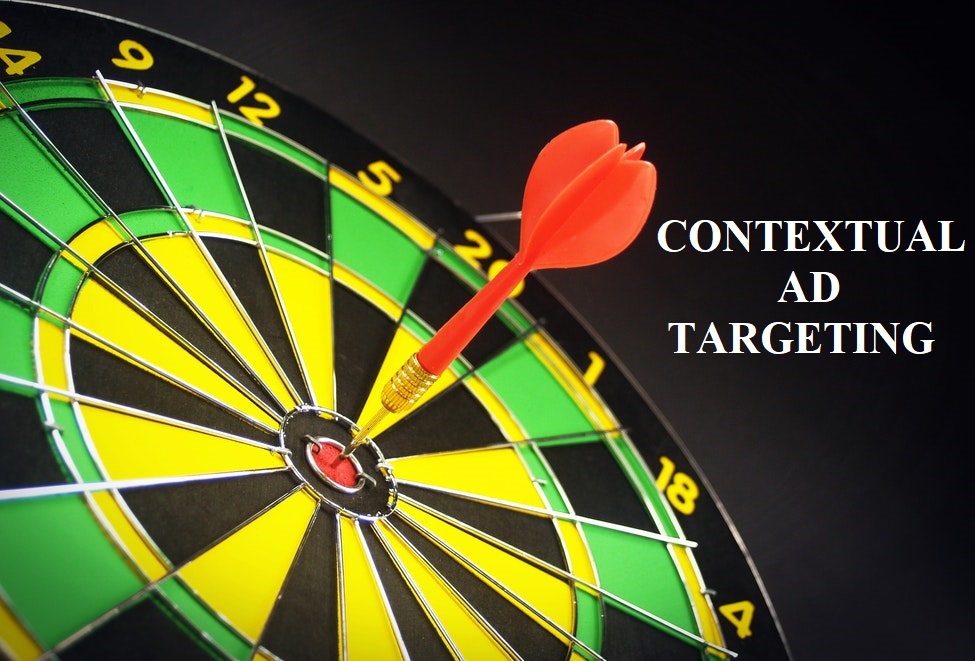
Digital advertising has become an indispensable tool for marketers to achieve their advertising goals. Broadly speaking, there are two main types of digital advertising – behavioral and contextual.
The debate on contextual advertising vs behavioral advertising has always troubled the marketers. Behavioral advertising targets ads on the basis of user data such as websites visited, products viewed, purchase history, etc. It makes use of third-party cookies to reach consumers, irrespective of contextual relevance. On the other hand, contextual advertising involves showing ads that are contextually relevant to the content a user is consuming.
Major web browsers like Safari and Firefox have already blocked third-party cookies, and Google’s Chrome browser has started phasing out these cookies. Besides third-party cookies’ blocking, privacy regulations like the General Data Protection Regulation (GDPR) and the California Consumer Privacy Act (CCPA) have made it difficult for marketers to continue using behavioral advertising. As contextual advertising does not involve the use of consumers’ personal data, it appears to be the best alternative to behavioral advertising.
A recent research study has shown that contextual advertising is more cost-efficient than behavioral ad targeting. Four big companies took part in the study. Five campaigns were run in order to compare contextual advertising and behavioral advertising in terms of efficiency. The five campaigns included one behavioral advertising campaign and four contextual advertising campaigns. The four contextual advertising campaigns were run by four different contextual advertising companies.
All of the five campaigns were setup identically and used the same ad unit. The number of impressions was same for each of the campaigns. For comparing the cost efficiency of contextual advertising and behavioral advertising, three measures were considered, viz. – Cost per mille in-demo impressions or In-Demo eCPM (cost of reaching desired demographic), Cost per click or CPC, and Cost per mille viewable impressions or vCPM. For viewable impressions, Media Rating Council’s standard was followed, i.e., fifty percent of ad visible for at least one continuous second.
The study found that contextually targeted impressions were significantly less costly than behaviorally targeted impressions, contextual eCPM being thirty-six percent lesser than behavioral eCPM. The cost per click (CPC) for contextually targeted ads was found to be forty-eight percent lesser than the cost per click for behaviorally targeted ads. After considering CPMs for every ad line, the cost per mille viewable impressions (vCPM) for contextually targeted ads was found to be forty-one percent lower than behaviorally targeted ads.
The study concluded that for all of the three cost efficiency metrics, contextual ad targeting was significantly better than behavioral ad targeting.
It is clear that in the era of data privacy regulations and cookie-less browsers, contextual advertising not only offers an effective and safe way of targeting ads to consumers, but also provides more cost-efficiency than behavioral advertising.
Understanding the Effects of Cognitive Shortcuts on Consumers’ Perception of Ads
PUBLISH DATE: 25 November 2021
The human brain is the most sophisticated organ of the human body. Research shows that human brain takes shortcuts when it comes to interpreting enormous information.
Although these shortcuts or cognitive schemas help in organizing and interpreting information, they can make people leave out new apposite information in favor of the information they already have, operate on preconceived notions, or unknowingly form untrue associations.
How human brain responds to ads has emerged as a topic of great interest for marketing professionals, display advertisers, and YouTube advertising companies. Research shows that reaction of people to an ad is affected by the ad’s environment, and cognitive schemas can influence the outcome of an advertising campaign. This article discusses how cognitive schemas affect people’s perception of ads.
An eye-tracking study for mapping eye movement patterns on a web page has revealed that availability bias affects people’s viewing of ads, i.e., people make an assumption about the location on a web page where an ad will be displayed on the basis of appearance of previous ads. Due to this cognitive schema, people tend to automatically not look at the ad hot spots, i.e., locations where ads usually appear.
Research shows that people give a look to an object on a web page that doesn’t interest them, then move their eyes from that area, and avoid focusing on that spot on that web page. Sometimes, they stop focusing on that area on other web pages of the same website, and may even do so on entirely different websites.
This means that if an ad of a display or video ad agency appears in a usual ad spot, for example on a sidebar, then it is important for that agency to have a great first impression of its ad, otherwise the ad may be overlooked.
Human mind considers objects on a web page that are close together, or are of the same color, size or shape, as related. Therefore, ads that are placed adjacent to unsavory content have a higher chance of being overlooked. Context plays a vital role in success or failure of an ad. By using contextual ad targeting, marketers can place their ads against contextually relevant and brand suitable content. Contextual advertising boosts the chances of user engagement.
In relation to advertising, a cognitive bias exists towards high-quality websites. High-quality websites are sites with low brand risk, whereas low-quality websites are those that have moderate brand risk. Research shows that an ad placed on a high-quality site generates a highly positive reaction, while the same ad when placed on a low-quality site, gets actively disliked. People show higher engagement on high-quality websites in comparison to low-quality sites, and this engagement also gets passed to the ads running on these websites.
While creating advertising strategies, marketers should keep in mind the above examples of cognitive schemas. In order to avoid availability bias, a brand and its partner display or YouTube video advertising company should use a tempting creative that casts a great first impression on audience. Besides attractive creatives, ads should contextually align with the surrounding content. The surrounding content should not only be safe or unharmful in order to ensure brand safety, but should also be brand suitable.
Understanding the Effects of Context and Sentiment on Consumers’ Perception of Ads and Brands
PUBLISH DATE: 15 November 2021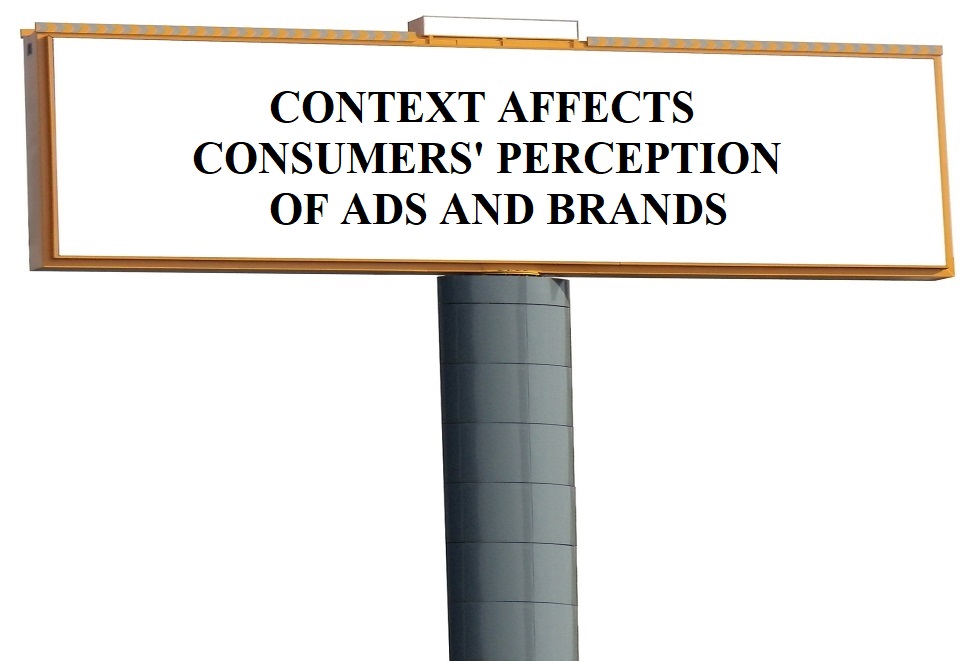
The digital advertising landscape is increasingly shifting towards contextual relevance. Brands are using contextual advertising approach for connecting with the right consumers with the right message and at the right time.
A recent survey study has shown that the quality of the environment in which a brand’s ads are placed influences consumers’ perception of the ads and the brand. The online survey, which involved more than a thousand participants, aimed to find out the kinds of ads that people prefer to see in different types of environments, and how context and sentiment of the content of a webpage affect people’s feelings towards the ads placed on that page and the associated brands.
The results of the survey are highly favorable to contextual targeting companies. Seventy percent of the survey participants stated that it is important, at least to some degree, that digital ads placed on a page are relevant to the page’s content. This means people value seeing ads that are in line with the content they are consuming.
Seventy-four percent of the survey participants, i.e., about three in four participants, stated that they like to see those ads on a web page that match with the content of the page. This finding reveals the preference of consumers for contextually relevant ads.
Seventy-two percent of the participants said that the content surrounding a digital ad impacts their perception of the ad. This finding reveals that people not only just give preference to the ads that are contextually relevant to the surrounding content, but also perceive them in a better way. The content of a web page influences the opinion of people about the ads on that page.
When participants were shown content from different content categories such as entertainment, finance, shopping, etc., their ad preference was found to be consistent, i.e. for each of the different content types, they always preferred to see ads contextually relevant to that content type. Thus, by leveraging the expertise of contextual advertising companies, brands can achieve unprecedented reach and engagement.
Fifty-six percent of the participants stated that they form a more favorable opinion towards a brand whose ads are contextually relevant. Sixty percent said that they are likely to remember ads that align well with the content of the page.
A piece of content can communicate a positive, neutral, or negative feeling to the people consuming it. Majority of the participants, i.e. seventy-two percent, said that the sentiment of the content they consume influences their feelings towards the brands whose ads are shown against that content.
The survey study found that, on average, participants were more receptive to content that conveyed positive or neutral feelings. Participants also showed increased favorability towards the brands whose ads appeared against content with positive or neutral sentiment. Moreover, participants showed increased memorability for ads placed against content with positive or neutral sentiment.
By understanding how context and sentiment affect consumers’ perception of ads and brands, marketers can boost consumers’ engagement with ads and brands.
Busting Myths about Contextual Targeting
PUBLISH DATE: 13 September 2021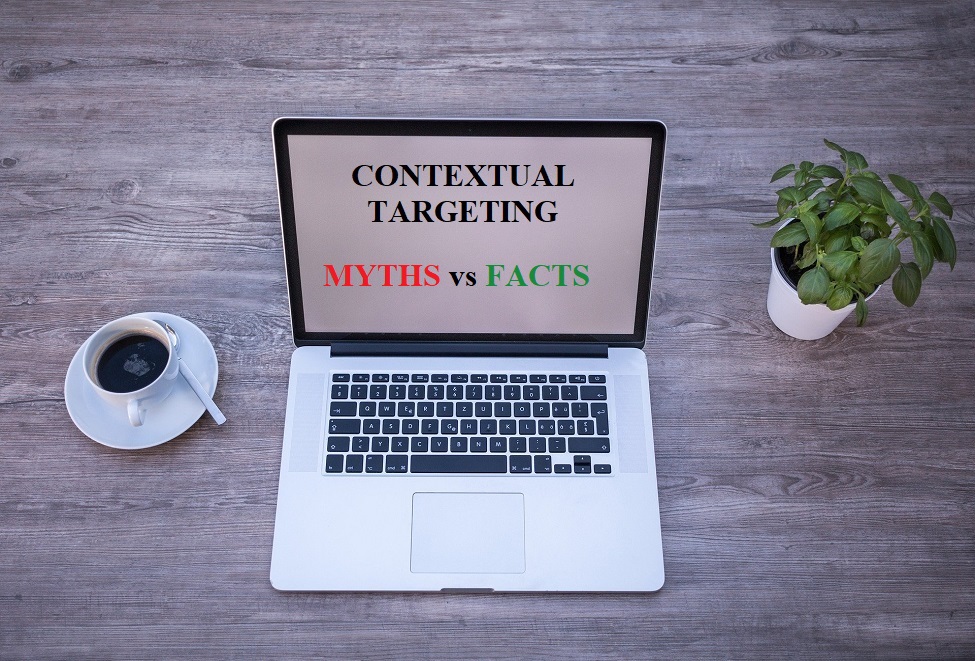
In the wake of phasing out of third-party cookies and rising brand safety issues, advertisers are increasingly adopting contextual targeting. But there are still prevailing certain myths that are making some marketers hesitant in implementing contextual targeting.
This article tries to bust these myths so that marketers get a clear picture of contextual targeting.
Myth 1: Contextual targeting is a simple, keyword-based approach
It is true that previously contextual targeting was based entirely on keywords, but this is not the case now. Today, we have machine learning and AI-powered contextual targeting technology that delivers unparalleled results.
Conventional contextual advertising involves targeting desired keywords in web addresses, titles, meta descriptions, tags, page content, etc. for placement of relevant ads. Similarly, conventional brand safety techniques involve avoiding ad placement against content having blacklisted keywords.
Conventional keyword-based techniques can lead to decrease in a campaign’s reach by labeling brand safe content as unsafe. For example, if a food company wants to run its ads against food content and has put alcohol in the list of blocked keywords, then by using conventional contextual advertising approach, its ads will be blocked not only against drunk driving content but also against content featuring recipes that use alcohol just as one of the ingredients. This will cast a negative impact on the campaign’s reach.
Thus, traditional keyword-based approach fails to understand nuances in context. This limitation has been overcome by contextual targeting technology powered by artificial intelligence. This technology maximizes reach, while ensuring brand safety and brand suitability.
Myth 2: Contextual targeting is less effective than cookie-based approach
This is completely untrue. Research shows that contextual ad targeting offers significantly high neural engagement and ad recall, when compared to random ad placements. Moreover, it has been found that there is a considerable increase in consumers’ purchase intent when they are exposed to ads that are contextually relevant to the content they are consuming.
The results of a marketing survey, in which over one thousand people participated, show that for the majority of consumers, it is important that ads which they see on a web page are contextually relevant to the content on that page.
Majority of the survey’s respondents showed increased favorability towards brands showing contextually relevant ads. Memorability for contextually aligned ads was also found to be significantly greater than randomly placed ads. Moreover, survey found that consumers not only prefer contextually aligned ads, but also form a better perception and opinion of them.
Myth 3: It is less cost-efficient in comparison to cookie-based advertising
When it comes to cost efficiency, contextual advertising is far better than cookie-based behavioral advertising. The cost of contextual ad impressions is considerably less than behavioral ad impressions. Research shows that effective cost per thousand impressions (eCPM), cost per click (CPC) and cost per thousand viewable impressions (vCPM) for contextual ads are significantly less than cookie-based ads.
In a study conducted in partnership with Dentsu Aegis Network, eCPM for contextual ads was found to be thirty-six percent less than that for third-party cookie-based ads. CPC for ads that were contextually targeted came out to be forty-eight percent less than CPC for ads that involved cookie-based targeting, while contextual vCPM was less than behavioral vCPM by forty-one percent.
Myth 4: Contextual targeting offers same results, irrespective of the provider
Although marketers should always go for AI-powered contextual ad targeting over conventional keyword-based technique, no two AI tech offering contextual advertising companies are equal in driving results. Marketers should choose a company that has many years of expertise and experience in contextual ad placement. The chosen company should have well-trained, refined and powerful machine learning and AI algorithms in order to drive excellent results.
The above myth-busting discussion will help marketers in better understanding contextual targeting, so that they can confidently use it to effectively achieve their advertising and brand safety goals.
How SMBs can Create a Successful YouTube Marketing Strategy?
PUBLISH DATE: 11 August 2021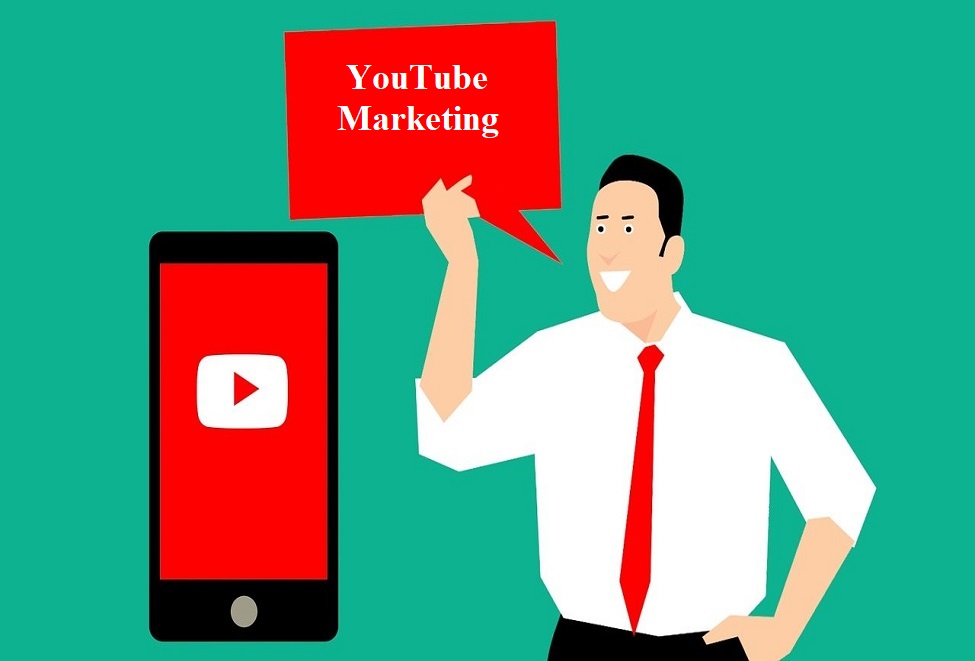
Over two billion people from around the world watch video content on YouTube every month. More than one billion hours of YouTube videos are watched every day. People are consuming YouTube from wherever they are and whenever they desire.
YouTube offers a great opportunity to businesses of any size including small and medium-sized businesses (SMBs) to effectively reach consumers. Here are few recommendations that SMBs can incorporate into their video marketing strategy to achieve success on YouTube.
Start and Brand a YouTube Channel
It is very important for a small or medium-sized business to start a YouTube channel. In a YouTube impact study, seventy-three percent of small businesses having a YouTube channel said that it helped them increase their customer base. SMBs can either manage their YouTube channels themselves or partner with YouTube marketing companies.
By branding its YouTube channel, a small or medium-sized business can attract new YouTube viewers, and deliver a signal to its customers that the channel they are viewing is a part of bigger brand experience. Through the branding tab, one can add a profile picture, a video watermark and a banner image. Links to brands’ website and social accounts can be added through the basic info tab. A business can customize its YouTube channel by adding a featured video for returning subscribers and a channel trailer for people who have not subscribed.
Create Videos that Meet Business Goals
While there is no limit to the type of video content that can be created, it is best to have videos that are focused on the business goals. Majority of YouTube channels operated by small businesses use videos that feature their products or services. SMBs can also use how-to-videos which can attract new viewers and lead to sales through links to product pages, or behind-the-scenes videos that can help set up their expertise in the market.
Optimize Channel and Videos to Build Subscribers and Customers
Majority of SMBs having a YouTube channel agree that it helps them in connecting with new customers from around the globe. To build subscribers and customers, channels and videos should be optimized. Videos and channel should have a clear CTA that either leads to subscription or to the product page on the business’ website. Keywords should be added in a video’s description field and tags in the tags box. A business should regularly post new captivating videos including trailers and teasers to keep subscribers engaged and for fetching new subscribers.
Run a YouTube Ad Campaign
Run a contextual advertising campaign on YouTube to reach a huge audience and drive massive engagement with the brand. Contextual targeting allows marketers to run YouTube ads that are contextually relevant to the video content the viewers are consuming at the moment. By leveraging YouTube contextual targeting, a high return on ad spend can be obtained.
By incorporating the above recommendations into their video marketing strategy, small and medium-sized businesses can make the best use of YouTube for growing their business.
Silverpush aims for a higher growth trajectory, promotes Kartik Mehta as the New COO
PUBLISH DATE: 22 July 2021INDIA, 22 July 2021 – Silverpush, well-acknowledged for its AI-powered contextual video advertising technology, announced a major change within their corporate structuring.
As part of their all round organizational growth plans, Silverpush has promoted Kartik Mehta as their new Chief Operating Officer. He has been given the responsibility to spearhead all strategic operational planning and execution at Silverpush with immediate effect.
Previously, as the Chief Revenue Officer, Kartik played a pivotal role in expanding Silverpush’s presence in APAC. This helped establish Silverpush as the preferred marketing technology provider for brands like Unilever, Coca Cola, Mondelez, Toyota, amongst others in the region.
With this change, Silverpush marks the beginning of a strategic shift towards a planned growth phase in the coming years. Having created a niche for itself since 2012, Silverpush now aims to penetrate further into the contextual video advertising and moment marketing space by adding to their repertoire of AI backed technology suite that gives brands an advantage over the conventional digital marketing techniques.
Commenting on his latest role Kartik said “Silverpush has been constantly pushing the boundaries of contextual advertising with its technologically advanced capabilities. This has helped us create a profitable entity that not only offers better solutions for clients but also augment brand safety and consumer privacy at the same time. The momentum that we’ve created will only push us forward in the right direction where Silverpush will look to create a larger footprint in existing & newer markets”
Hitesh Chawla, Founder and CEO, Silverpush also shared his thoughts on the development – “Over the years Kartik has made it his mission to propel Silverpush to new heights and it was only natural that he took the mantle of COO to continue the good work. With our successful expansion in the APAC region, Silverpush showcased its prowess in terms of technological capabilities and contextual intelligence. With Kartik giving direction to our operations, Silverpush will eagerly explore investment and acquisition opportunities in the ad tech space and consolidate our presence beyond the markets we currently serve.”
Silverpush is a marketing technology company that has helped brands maximise their audience engagement via contextual video advertising. With roots in India and headquartered in Singapore, the company has a global foot-print with offices across Malaysia, Indonesia, Thailand, the Philippines, Vietnam, Japan, USA, Dubai, Egypt, Tanzania, Nigeria and South Africa.
How Contextual Intelligence Keeps Brands Out of Harm’s Way?
PUBLISH DATE: 01 July 2021
For marketers, ensuring brand safety is a must considering the diverse nature of the content on the internet. The online world is filled with brand-unsafe content, which can be classified into more than a dozen unsafe categories such as obscenity, illegal drugs, terrorism, etc. Ads of a brand appearing next to any type of brand unsafe content heavily tarnish the image of that brand.
The large majority of respondents (87%) in a survey by Trustworthy Accountability Group and Brand Safety Institute said it is very or somewhat important for advertisers to make sure their ads don’t appear near dangerous, offensive, or inappropriate content. An overwhelming majority said they would reduce their spending on a product they regularly buy if ads of that product appear near offensive, illegal, or dangerous content.
Keyword Blocking has Significant Limitations
Keyword-based blacklisting is a common method used by marketers to ensure contextual brand safety. It involves avoiding the placement of ads against content containing one or more blocked keywords. A blocked keyword may also be present in the title, description, metadata, or URL.
The keyword-based blacklisting approach is marred by the over-blocking of content, and therefore, can kill reach. It can lead to the blocking of completely innocuous content. This is because it fails to comprehend the nuances in context, i.e., it is unable to understand the true context in which a keyword is used. For example, if “alcohol” is the blocked keyword, then the blacklisting method will not only tag a video featuring someone drinking and driving as unsafe but will also tag a video about a recipe in which alcohol has been used as one of the ingredients as unsafe.
Contextual Intelligence is the Key to Ensure Brand Safety and Suitability
Contextual intelligence is the next-generation technology that goes beyond brand safety to offer a full-fledged brand-suitable environment to advertisers. It analyzes content beyond keywords and understands the nuances in context to interpret the complex relationship between the words.
Powered by artificial intelligence, it understands the true meaning of the content on a page. It effectively blocks the placement of ads against content that falls into one of the generic unsafe categories or is not suitable for a specific brand in terms of the nature of its business. For example, contextual intelligence technology will allow an ad of an insurance brand to get placed against a car accident news but will prevent an ad of a car manufacturer from appearing next to such content.
AI-powered contextual intelligence technology can not only detect brand unsafe and unsuitable contexts in textual content but also in images and videos. Thus, for marketers who use video advertising for brand promotion, this technology assures them that their ads always appear against the video content that is both brand-safe and suitable.
Contextual intelligence not only ensures brand safety and brand suitability but also enables brands to deliver highly contextually relevant ads at scale to consumers to drive massive engagement. AI-powered contextual ad targeting does not involve the use of consumer’s personal data and third-party cookies and is therefore fully compliant with the data privacy regulations. Contextual intelligence not only benefits brands in terms of safety and suitability but also in terms of compliance, scale, and engagement.







